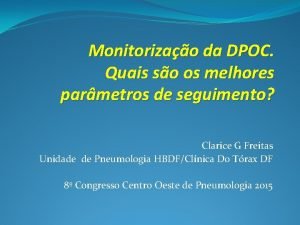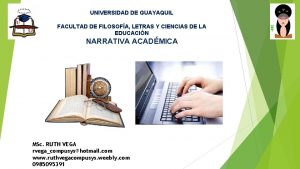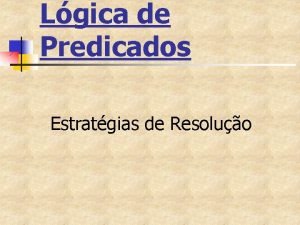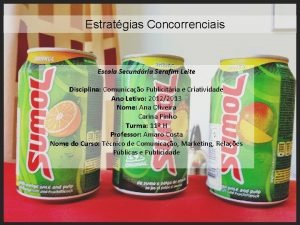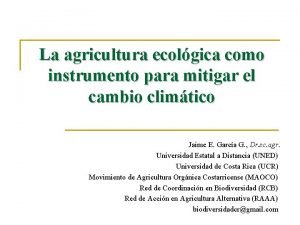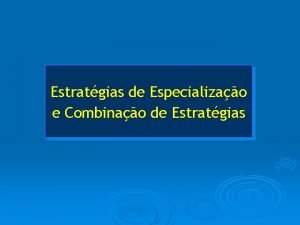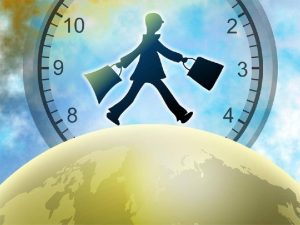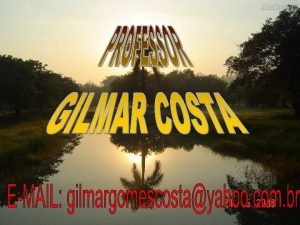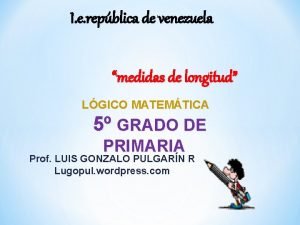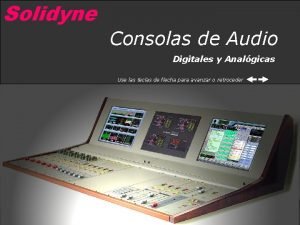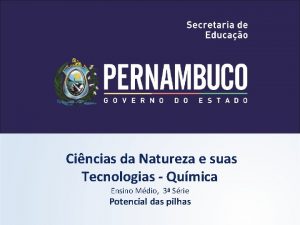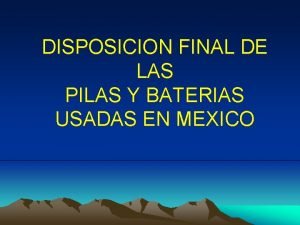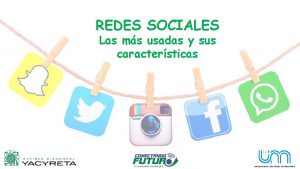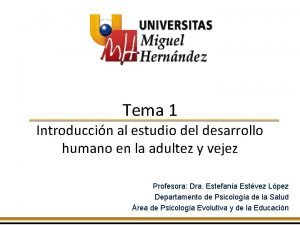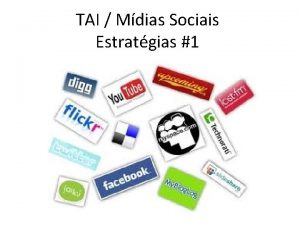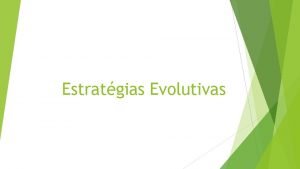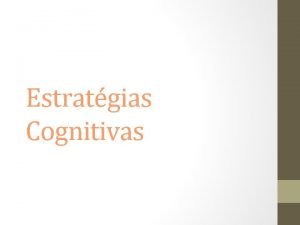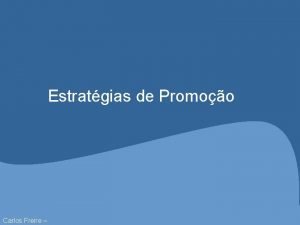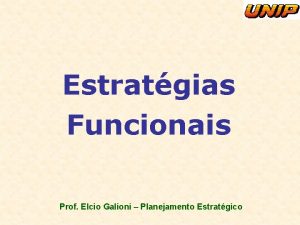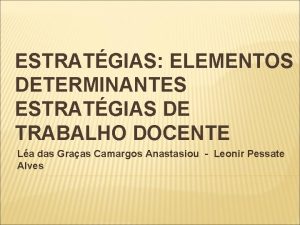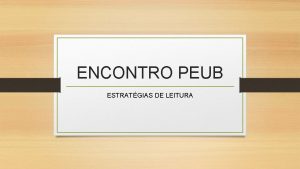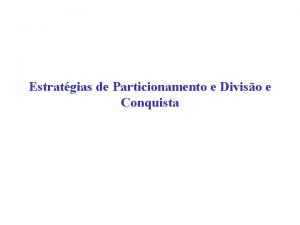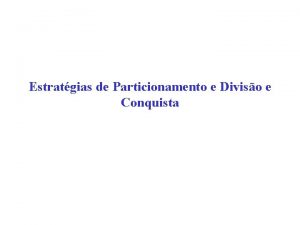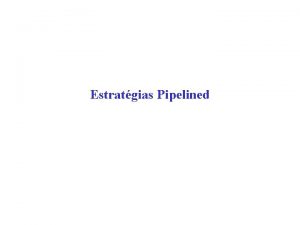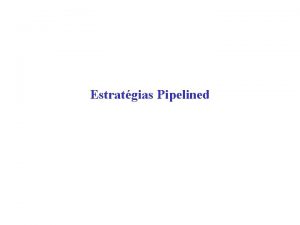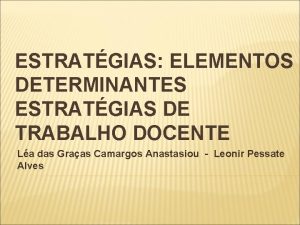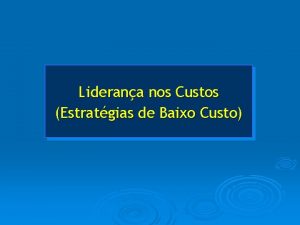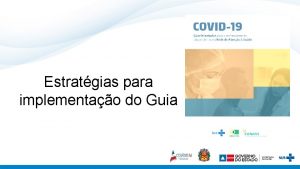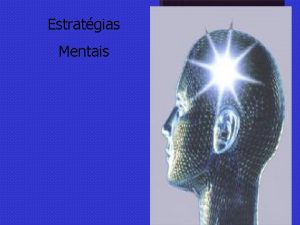Heursticas Estratgias usadas quando no se tem toda






















- Slides: 22


Heurísticas Estratégias usadas quando não se tem toda a informação. Fonte: Stuart Read, Professor

Como se ensinava Empreendedorismo? 1. Estimulava-se o individuo a ter as características empreendedoras. 2. Estimulava-se os empreendedores em potencial a desenvolver estratégias para reconhecer, identificar e explorar oportunidades com alto potencial. 3

E hoje? Como se ensina? Recentemente estuda-se profundamente como o empreendedor age, pensa e decide desde o inicio do seu negócio. Daí, depois de inúmeros estudos percebeu-se a abordagem effectuation. 4


Então, por onde começar? ü TRADICIONALMENTE pelos objetivos baseados em previsões. ü RECENTEMENTE através dos recursos. A base para as decisões e novas oportunidades: – Quem sou eu – O que eu sei – Quem eu conheço 6



MICRO EU

Risco, Retorno e Recursos TRADICIONALMENTE Retorno esperado. Calcula-se o retorno (vantagem) e segue a melhor oportunidade (com o menor risco). RECENTEMENTE Perda Acessível (Possível). Calcula-se o potencial de perda e não se arrisca mais do que se pode perder.

MEANS = MEIOS


ATITUDE EM RELAÇÃO AO STAKEHOLDERS TRADICIONALMENTE Competição. Relações transacionais comos consumidores e fornecedores. RECENTEMENTE Parceria. Construir um “futuro” junto com os consumidores, fornecedores e até mesmo com possíveis competidores. 13

Lógica Implícita & Como agir TRADICIONALMENTE Até onde posso prever o futuro, posso controlá-lo. PLANO DE NEGÓCIOS Até onde posso controlar o futuro, não preciso prevê-lo. COCRIAÇÃO 14



IMPREVISTOS TRADICIONALMENTE Evita-se imprevistos. RECENTEMENTE Alavanca-se os imprevistos. Imprevistos podem representar novas oportunidades. 17

DIFFERENTIAL APPROACH TO RISK BETWEEN ENTREPRENEURS AND BANKERS Entrepreneurs Bankers Risk Step 2 Push creatively to increase return High Step 1 Pick a comfortable level of risk Step 1 Pick a target return High Step 2 Push creatively to increase return Low Step 2 Try to reduce risk through insurance, etc. Low Return Low High For a given level of risk, entrepreneurs feel they can expand the problem space and increase returns Return Low High For a given level of return, bankers feel they can reduce the problem space and decrease risk.


THE CONTINGENCY PATH TO NOVEL OUTCOMES CONTINGENCIES Information Events People CHANGE YOUR MEANS What you know Who you are Who you know WHICH GIVES YOU NEW MEANS TO LEVERAGE by asking yourself "Now what can I do with my revised means? " WHICH MAY GENERATE NOVEL OUTCOMES i. e. new venture directions


EFFECTUATION IN ACTION EXPANDING CYCLE OF RESOURCES MEANS NEW MEANS WHO I AM WHAT I KNOW WHO I KNOW GOALS WHAT CAN I DO? INTERACT WITH PEOPLE I KNOW STAKEHOLDER COMMITMENTS NEW GOALS NO COMMITMENT DEAD END OPPORTUNITY ON HOLD CONVERGING CYCLE OF CONSTRAINTS ON GOAL NEW FIRMS, NEW PRODUCTS OR NEW MARKETS CHANGES IN THE ENVIRONMENT CONSTRAINTS
 Tem gente que tem cheiro de passarinho
Tem gente que tem cheiro de passarinho Almas perfumadas
Almas perfumadas Pai celeste eu preciso de ti
Pai celeste eu preciso de ti Cat dpoc
Cat dpoc Propaganda corporativa
Propaganda corporativa Estratgias
Estratgias Estratgias
Estratgias Estratgias
Estratgias Meta voz
Meta voz Estratgias
Estratgias Pair
Pair Combinao
Combinao Quem tem ouvidos ouça quem tem olhos veja
Quem tem ouvidos ouça quem tem olhos veja Amigo encontrou um tesouro
Amigo encontrou um tesouro Canal contexto
Canal contexto Cuales son las medidas de longitud usadas en venezuela
Cuales son las medidas de longitud usadas en venezuela Consolas para radio fm usadas
Consolas para radio fm usadas As seguintes semicelas são usadas para montar uma pilha
As seguintes semicelas são usadas para montar uma pilha Disposicion de pilas usadas
Disposicion de pilas usadas Las aplicaciones mas usadas
Las aplicaciones mas usadas Https //www.multiplicalia.com/las-redes-sociales-mas-usadas
Https //www.multiplicalia.com/las-redes-sociales-mas-usadas El desarrollo dura toda la vida
El desarrollo dura toda la vida Inevitable amor
Inevitable amor



